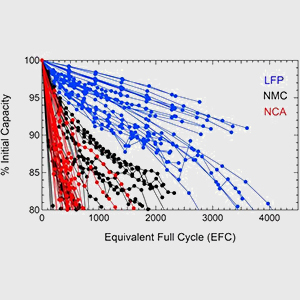Maybe I am missing the point you are trying to make?
There is plenty of evidence out there that suggests smaller cycles are better for li-ion batteries than larger cycles… provided the starting state of charge is the same. Deep cycles (wider depth of discharge) typically will result in fewer cycles before degradation capacity reaches less than 70%.
BU meta description needed...

batteryuniversity.com
Recent independent degradation tests of commercial lithium batteries prove - LFP chemistry is safer and has a longer life-span than NMC.

www.onecharge.biz
The li-ion batteries thrive on smaller rates of charge/discharge. People that fixate on the ‘number of charging/discharging cycles’ might want to think about wherr ‘regen’ falls into their logic.
Temperature will definitely be a more important factor in all of this discussion. But again, I think everyone just needs to enjoy their car. Outside of the 90kWh packs, most Tesla battery packs exhibit pretty stable degradation.
The BMS is managing the battery health, and will do its best in any given scenario. Tesla has several safeguards/messages that notify the user (i.e if you charge over 90%, if you engage ludicrous+, etc.)





